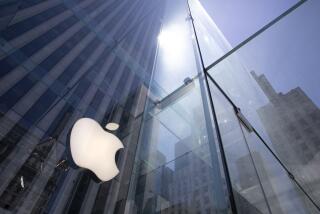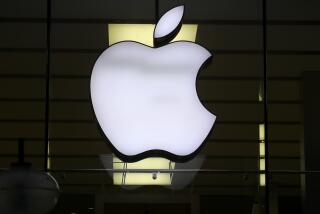Why Apple may need a cheaper iPhone now more than ever
Since the beginning of this year, Apple has been dogged by concerns about slowing growth in its smartphone business. Nervous investors have driven down the stock. And critics have questioned the companyâs ability to innovate.
But in recent weeks, it seems like slowing smartphone sales have spread throughout the industry like a virus. A couple of weeks ago, Research In Motion reported disappointing earnings thanks to sluggish BlackBerry sales. And on Friday, HTC and Samsung disclosed that they were going to miss their targets in the most recent quarter.
For Topeka Capital Markets analyst Brian White, this is an unmistakable sign. The problem is not Apple, he says. Itâs everyone. The high-end smartphone market, where Apple has focused, is saturated.
PHOTOS: Top smartphones of 2013
âIn our view, we believe the higher-end portion (possibly including certain mid-range) of the smartphone market has hit a wall due to high penetration rates and high price points,â White wrote in a note to clients Friday.
And no amount of new gee-whiz features is going to change that, White believes. Thatâs bad news for all these companies, but it hits Apple especially hard because thatâs the main target of its phones.
âSince Apple only serves the high-end smartphone market when unveiling a new iPhone (older versions are discounted but these are not new products), no other smartphone vendor is more susceptible to this slowing growth than Apple,â White wrote.
The good news is that the low-end market for less expensive smartphones is still exploding, especially in China. Given leaks of photos of a less expensive iPhone, among other clues, White is more confident than ever that Apple will unveil such a gadget later this year to address the fastest-growing segment of the smartphone market.
âWe believe a $350-to-$400 price point will allow Apple to significantly expand its reach in the smartphone market and better address developing markets such as China, while opening up more opportunities in Brazil, Russia, India and elsewhere,â White wrote.
That should help narrow the price gap in many of these regions. But as our story this week about Appleâs challenges in Brazil explained, the company also faces hurdles like high tariffs on imported goods that keep the cost of its products high.
ALSO:
Vine adds privacy settings, video shooting tools and âre-viningâ
BeachMint founders: Weâre not fired, company is not going under
Apps assess value of Gmail account to hackers, maps circle of friends
More to Read
Inside the business of entertainment
The Wide Shot brings you news, analysis and insights on everything from streaming wars to production â and what it all means for the future.
You may occasionally receive promotional content from the Los Angeles Times.











